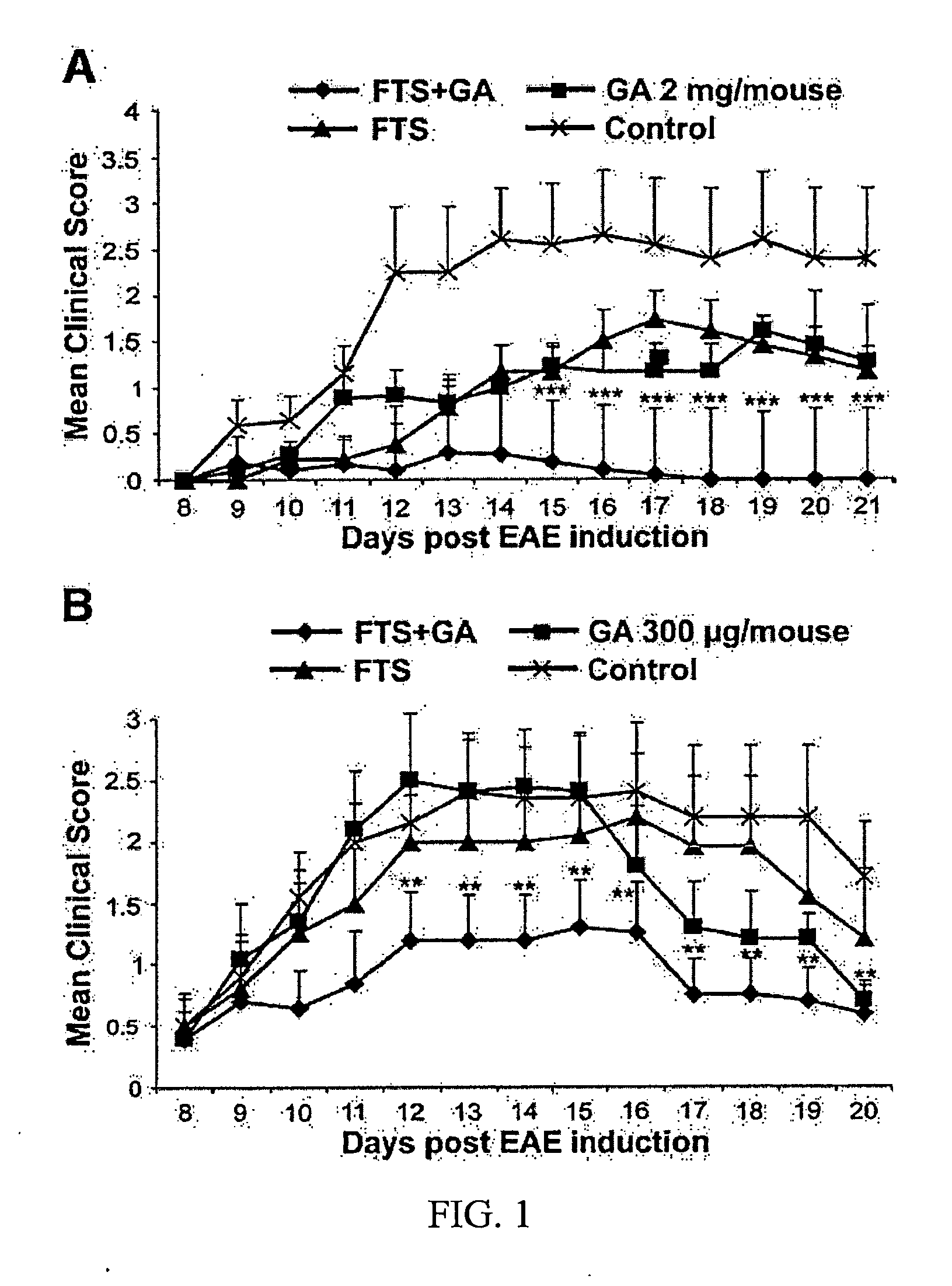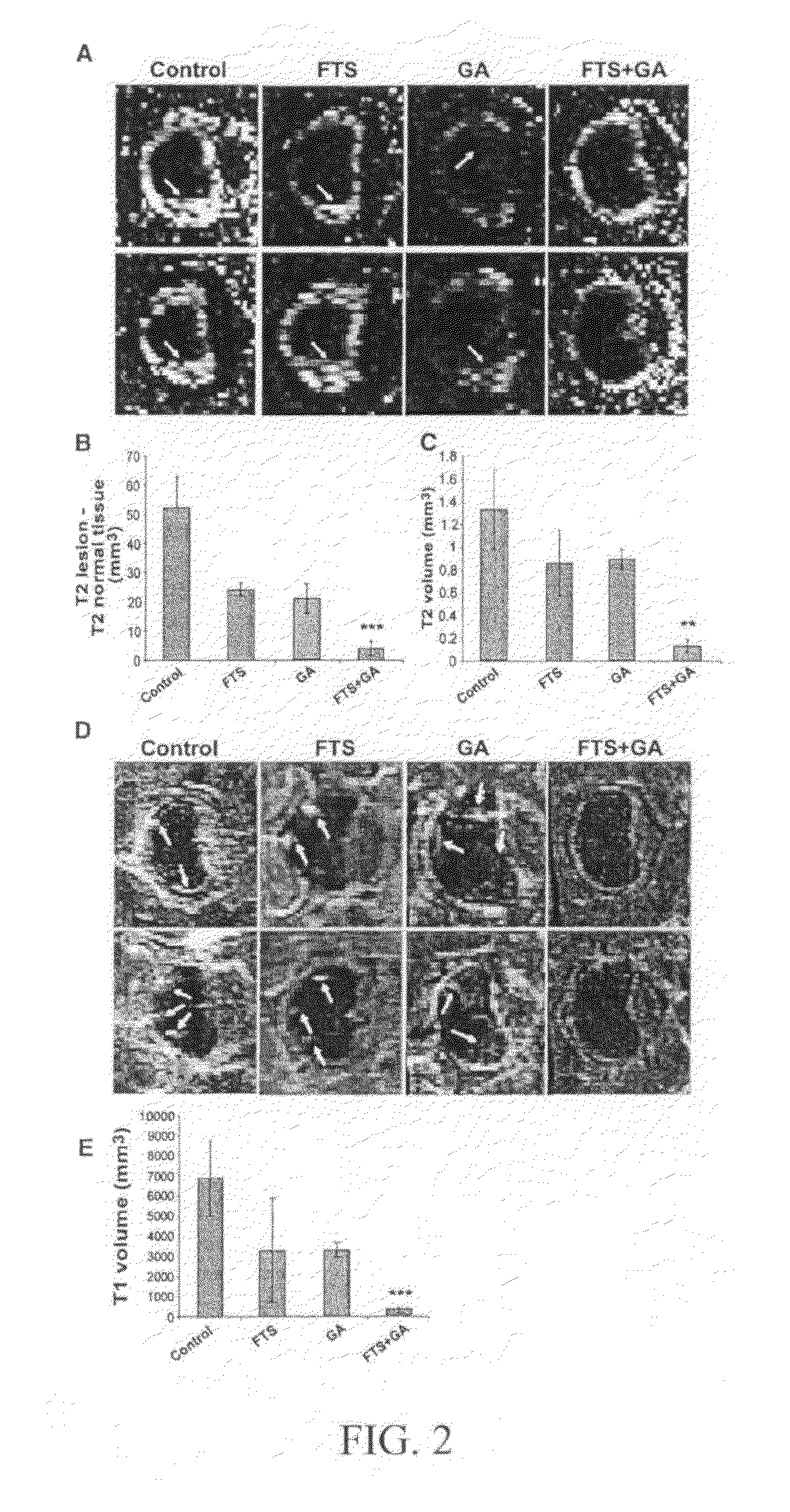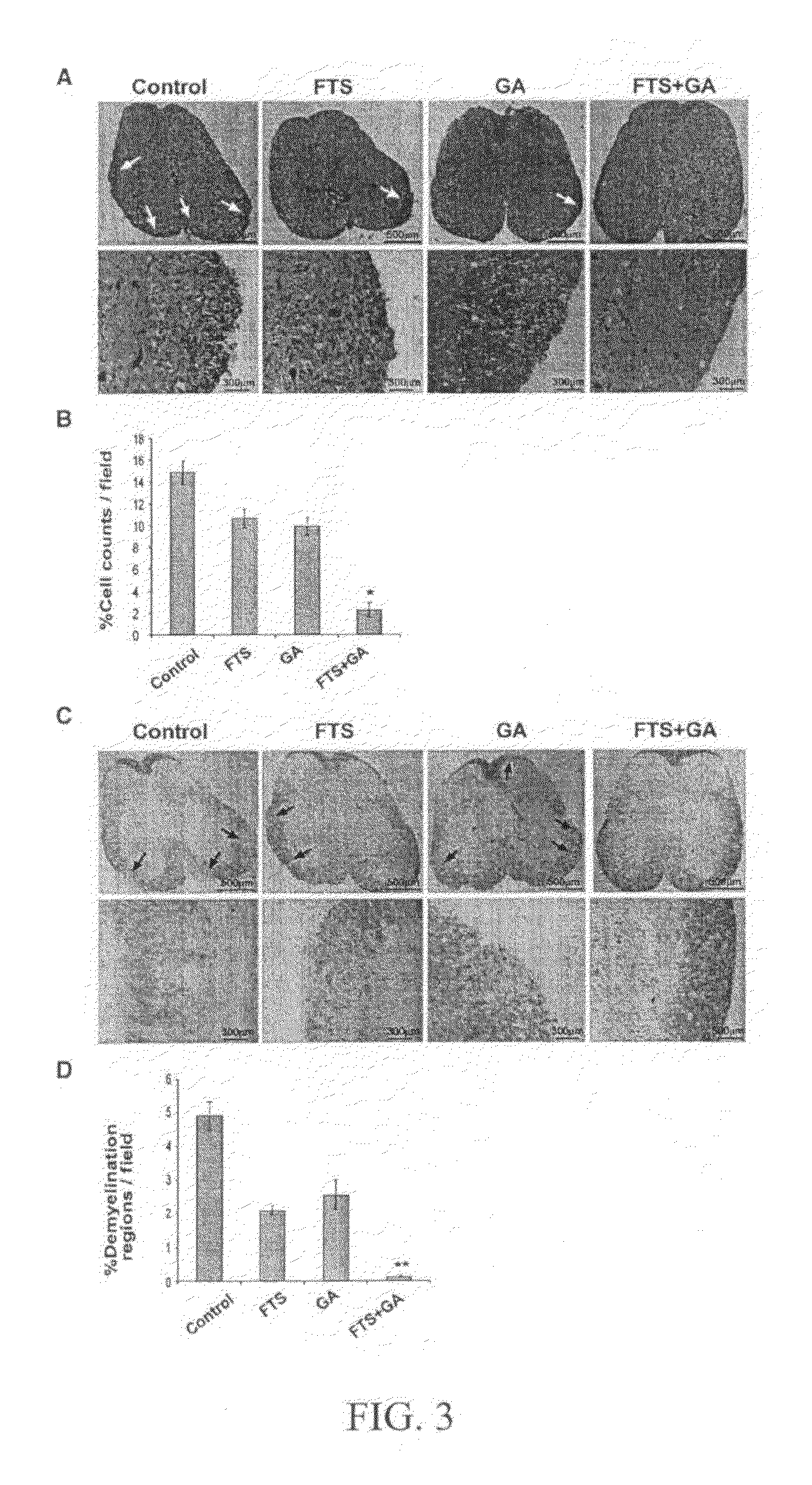Treatment of multiple sclerosis
a technology for multiple sclerosis and treatment, applied in the field of multiple sclerosis, can solve the problems of significant disability or even death shortly after, and significant limitations in their effectiveness
- Summary
- Abstract
- Description
- Claims
- Application Information
AI Technical Summary
Benefits of technology
Problems solved by technology
Method used
Image
Examples
example i
A Combined Treatment of Copaxone® and Salirasib Resulted in a Complete Block of Experimental Allergic Encephalomyelitis (EAE) in Mice.
[0054]The animal model widely found useful for multiple sclerosis research is experimental autoimmune encephalomyelitis (EAE). Active immunization with myelin or component peptides or passive transfer of myelin-reactive lymphocytes causes inflammation relatively specific for white matter together with clinical features compatible with multiple sclerosis. The experimental work described in this example involved the combined effect of salirasib and GA on the EAE model. The results obtained from these experiments indicate a significant synergistic effect of the combined therapy which indicates clinical usefulness.
Materials and Methods
Mice
[0055]Eight-week-old female C57bl / 6 mice were purchased from Harlan. The mice were housed under standard conditions in top filtered cages. Mice were fed a regular diet and given acidified water without antibiotics.
Induct...
example ii
Combined Treatment of FTS Administered Per Os with GA Suppressed the Clinical Signs of EAE
[0091]EAE was induced in C57bl / 6 mice with MOG and drug treatment started on day 9 after disease induction (see Materials and Methods) and mice in one group received the combined treatment of FTS (60 mg / kg / day, p.o., daily) and GA (15 mg / kg / day, s.c, daily), mice in the second group received FTS (60 mg / kg / day, p.o., daily), mice in the third group received GA (15 mg / kg / day, s.c., daily) and mice in the fourth group received the vehicle only. In the delayed treatment, starting just before the onset of clinical signs of EAE (day 9), we found that 9 of 10 (90%) vehicle-treated animals, 7 of 10 (70%) GA treated animals and 6 of 10 (60%) FTS treated animals developed clinical signs of EAE compared to 3 of 10 (30%) of the combined treatment mice (FTS and GA) mice (p−3 vs. control and GA or FTS− alone treated mice, Fisher's exact test).
[0092]The clinical scores of the mice recorded and shown in FIG. 7...
example iii
Combined Treatment of FTS Administrated Subcutaneous with GA Suppressed the Clinical Signs of EAE
[0093]In our next experiment we examined whether the formulation of FTS dissolved in GA might be effective for treatment for EAE. For that matter, EAE was induced in C57bl / 6 mice with MOG and drug treatment started on day 9 after disease induction (see Materials and Methods) and mice in one group received the combined treatment of FTS (40 mg / kg / day, s.c., daily) and GA (15 mg / kg / day, s.c, daily), mice in the second group received FTS (40 mg / kg / day, s.c., daily), mice in the third group received GA (15 mg / kg / day, s.c., daily) and mice in the fourth group received the vehicle only. In the delayed treatment, starting just before the onset of clinical signs of EAE (day 9), we found that 10 of 10 (100%) vehicle-treated animals, 9 of 10 (90%) GA treated animals and 9 of 10 (90%) FTS treated animals developed clinical signs of EAE compared to 5 of 10 (50%) of the combined treatment mice (FTS an...
PUM
| Property | Measurement | Unit |
|---|---|---|
| Mass | aaaaa | aaaaa |
| Mass flow rate | aaaaa | aaaaa |
| Mass flow rate | aaaaa | aaaaa |
Abstract
Description
Claims
Application Information
 Login to View More
Login to View More - R&D
- Intellectual Property
- Life Sciences
- Materials
- Tech Scout
- Unparalleled Data Quality
- Higher Quality Content
- 60% Fewer Hallucinations
Browse by: Latest US Patents, China's latest patents, Technical Efficacy Thesaurus, Application Domain, Technology Topic, Popular Technical Reports.
© 2025 PatSnap. All rights reserved.Legal|Privacy policy|Modern Slavery Act Transparency Statement|Sitemap|About US| Contact US: help@patsnap.com



